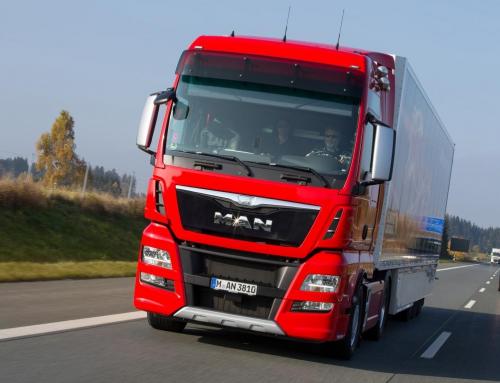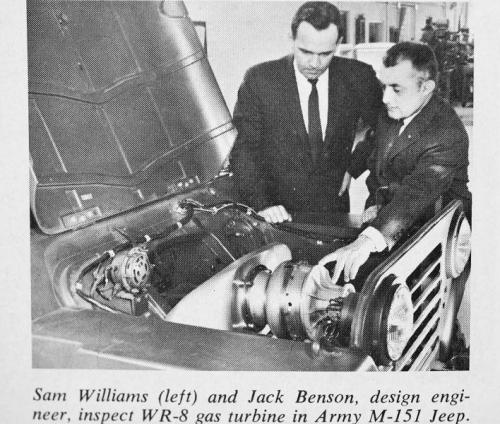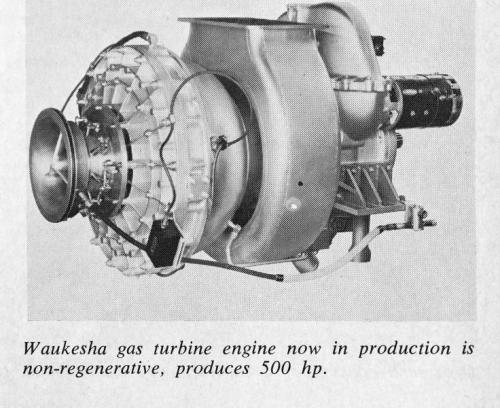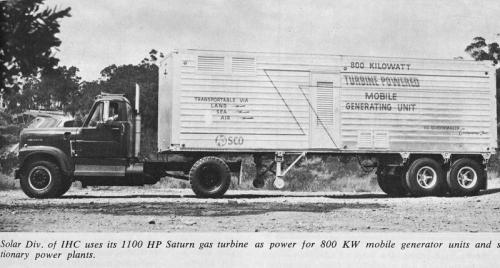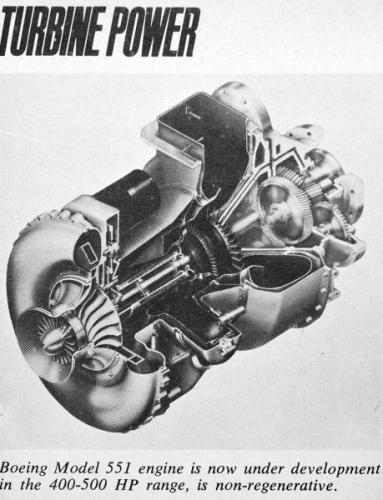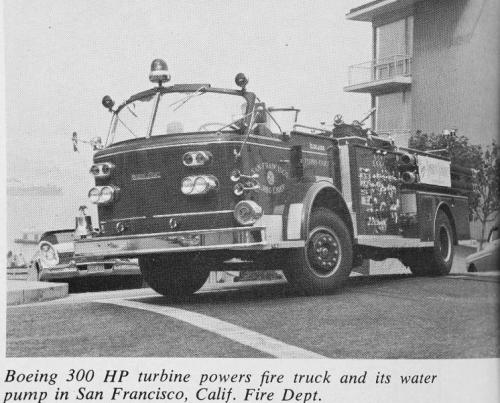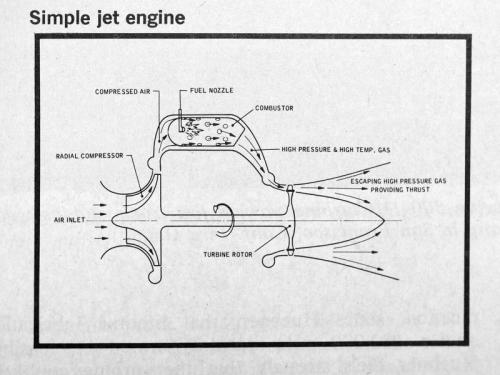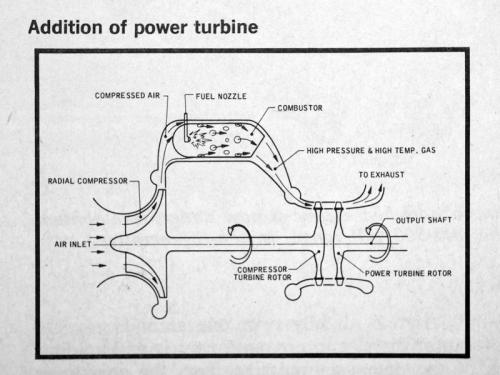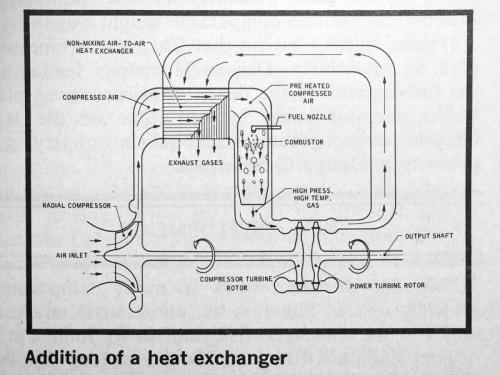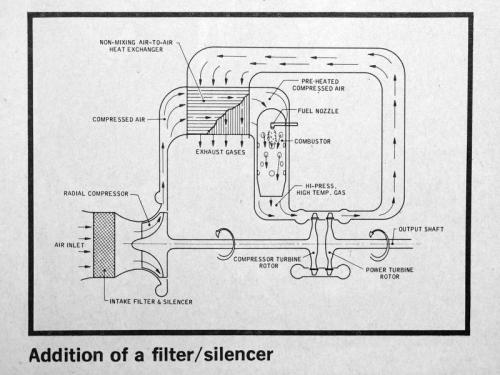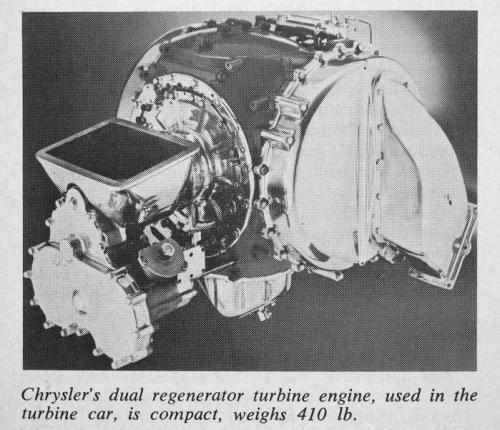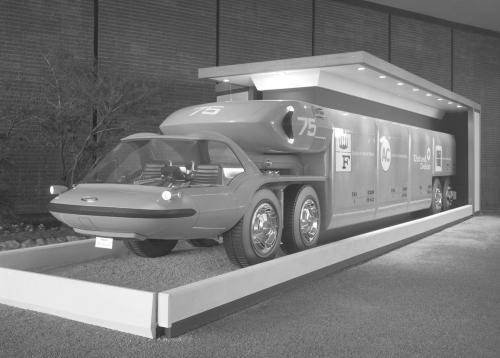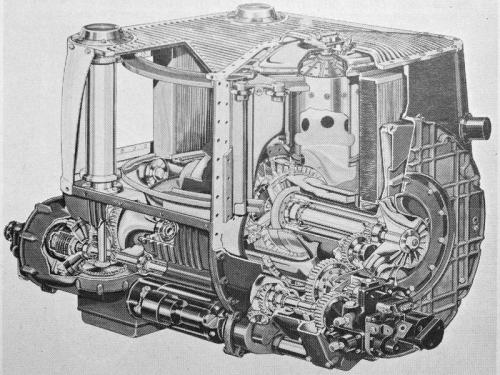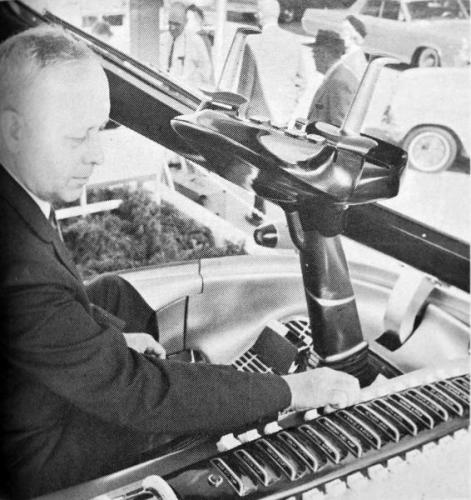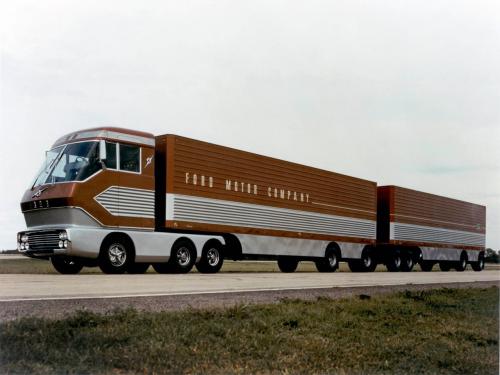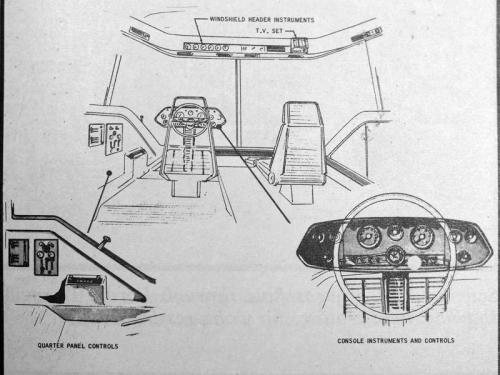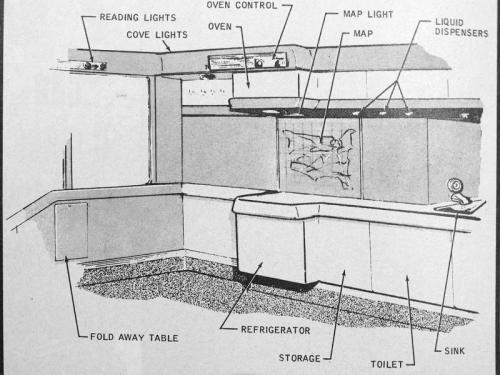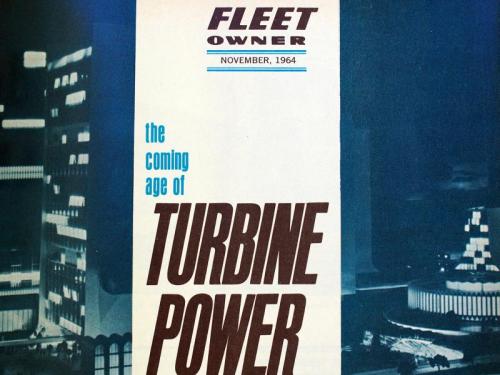
kscarbel2
Moderator-
Posts
18,868 -
Joined
-
Days Won
114
Content Type
Profiles
Forums
Gallery
Events
Blogs
BMT Wiki
Collections
Store
Everything posted by kscarbel2
-
http://blog.caranddriver.com/this-crazy-one-off-amphibious-corvair-pickup-can-be-yours/ http://blog.hemmings.com/index.php/2015/12/01/air-cooled-but-water-bound-one-off-corphibian-floats-to-auction/
-
- 1
-

-
Russia outlines Turkey’s involvement in ISIS oil trade Reuters / December 2, 2015 Russia's defense ministry on Wednesday shared evidence that Turkish President Tayyip Erdogan and his family were benefiting from the illegal smuggling of oil from ISIS-held territory in Syria and Iraq. At a briefing in Moscow, defense ministry officials displayed satellite images showing columns of tanker trucks loading with oil at ISIS-controlled installations in Syria and Iraq, and then crossing the border into neighboring Turkey. "Turkey is the main consumer of the oil stolen from its rightful owners, Syria and Iraq. According to information we've received, the senior political leadership of the country - President Erdogan and his family - are involved in this criminal business," said Deputy Defence Minister Anatoly Antonov. "Maybe I'm being too blunt, but one can only entrust control over this thieving business to one's closest associates." "In the West, no one has asked questions about the fact that the Turkish president's son heads one of the biggest energy companies, or that his son-in-law has been appointed energy minister. What a marvelous family business!" "The cynicism of the Turkish leadership knows no limits. Look what they're doing. They went into someone else's country, they are robbing it without compunction," Antonov said. The Russian defense ministry also explained how the same criminal networks which were smuggling oil into Turkey were also supplying weapons, equipment and training to Islamic State and other Islamist groups. "According to our reliable intelligence data, Turkey has been carrying out such operations for a long period and on a regular basis. And most importantly, it does not plan to stop them," said Sergei Rudskoy, deputy head of the Russian military's General Staff. Despite evidence of ISIS oil smuggling, the US-led coalition in Syria and Iraq is not striking convoys of oil trucks heading to Turkey, Russia’s General Staff has said. “It’s hard not to notice” the thousands of trucks used by terrorists for oil smuggling, says Lieutenant General Sergey Rudskoy, deputy commander of the General Staff. “However, we see no strikes on those convoys by the coalition - only a tripling in the number of strategic UAVs (unmanned aerial vehicles) has been observed,” he said. The deputy commander stressed that defeating IS would be impossible without curbing its main source of income - the illegal oil trade - and urged the coalition to strike IS oil infrastructure. Since September 30, when its airstrikes in Syria began, Russia has destroyed 32 ISIS oil complexes, 11 refineries, 23 oil pump stations and 1,080 tanker trucks. “The income of this terrorist organization was about US$3 million per day. After two months of Russian airstrikes their income was about $1.5 million a day,” Rudskoy said. Also on Wednesday, a prominent Iraqi politician said he had addressed the US military on the issue of stopping the illegal IS oil trade, but had received a negative reply. “I have personally contacted US representatives asking them to target ISIS trucks transporting Iraqi and Syrian oil to Turkey, only to be told that they were civilian targets so they [the US] could not attack them,” says Mowaffak al-Rubaie, leader of the State of Law Coalition party in the Iraqi parliament. U.S. State Department spokesman Mark Toner said U.S. information was that ISIS was selling oil at the wellheads to middlemen who were involved in smuggling it across the frontier into Turkey. Russian officials described three main routes by which they said oil and oil products were smuggled from Islamic State territory into Turkey. The ministry said the Western route took oil produced at fields near the Syrian city of Raqqa to the settlement of Azaz on the border with Turkey. From there the columns of tanker trucks pass through the Turkish town of Reyhanli, the ministry said, citing what it said were satellite pictures of hundreds of such trucks moving through the border crossing without obstruction. "There is no inspection of the vehicles carried out ... on the Turkish side," said Rudskoy. Some of the smuggled cargoes go to the Turkish domestic market, while some is exported via the Turkish Mediterranean ports of Iskenderun and Dortyol, the ministry said. Another main route for smuggled oil runs from Deir Ez-zour in Syria to the Syrian border crossing at Al-Qamishli. The trucks then took the crude for refining at the Turkish city of Batman. A third route took oil from eastern Syria and western Iraq into the south-eastern corner of Turkey.
-
The Local DE / December 2, 2015 Only 29 out of Germany's 66 Tornado jets (https://upload.wikimedia.org/wikipedia/commons/3/37/Panavia_Tornado_IDS_of_Luftwaffe,_static_display,_Radom_AirShow_2005,_Poland.jpg) – the type slated to see action on reconnaissance flights over Syria – are airworthy, a Defence Ministry report showed on Wednesday. "The state of our flying systems remains unsatisfactory," Bundeswehr (German army) chief of staff General Volker Wieker wrote in the report, although he added that the army had managed to "stabilize" its deteriorating readiness. Germany's Tornados, fighter-bombers designed to fight Soviet forces during the Cold War, are all between 23 and 34 years old and are seen as on their way out of service. But Defence Minister Ursula von der Leyen insisted that Germany would be able to fulfil its commitments to ally France for the fight against Isis. "Thirty Tornados are ready for action, and we need six of them. That gives us a wide margin," von der Leyen said. Equipment troubles have plagued the Bundeswehr for years, especially the Luftwaffe (air force), several of whose aircraft ran into technical problems while delivering weapons to Kurds fighting Isis in northern Iraq and field hospitals to West African countries battling the Ebola outbreak. The full parliament is set to vote on Friday on whether to go ahead with the government's plans to join the battle against Isis in Syria with 1,200 soldiers. As well as the Tornados outfitted with reconnaissance equipment, Chancellor Angela Merkel wants to send an air refuelling tanker and a navy frigate to join the coalition.
-
Perhaps that's not the best picture, at least for people unaccustomed to seeing the TGX. Not to flatter a competitor, but the TGX is a cutting edge truck. There's not one U.S. market truck that holds a candle to it. When I saw Paccar's new Kenworth T680 and Peterbilt Model 579 at Louisville (MATS) in 2012, I thought they had a face that only a mother could love, with their droopy face and Little Tikes exterior design cues.
-
Many Iraqis believe the U.S. is helping ISIS The Washington Post / December 1, 2015 On the front lines of the battle against the Islamic State, suspicion of the United States runs deep. Iraqi fighters say they have all seen the videos purportedly showing U.S. helicopters airdropping weapons to the militants, and many claim they have friends and relatives who have witnessed similar instances of collusion. Ordinary people also have seen the videos, heard the stories and reached the same conclusion — one that might seem absurd to Americans but is widely believed among Iraqis — that the United States is supporting the Islamic State for a variety of pernicious reasons that have to do with asserting U.S. control over Iraq, the wider Middle East and, perhaps, its oil. “It is not in doubt,” said Mustafa Saadi, who says his friend saw U.S. helicopters delivering bottled water to Islamic State positions. He is a commander in one of the Shiite militias that last month helped push the militants out of the oil refinery near Baiji in northern Iraq alongside the Iraqi army. The Islamic State is “almost finished,” he said. “They are weak. If only America would stop supporting them, we could defeat them in days.” U.S. military officials say the charges are too far-fetched to merit a response. “It’s beyond ridiculous,” said Col. Steve Warren, the military’s Baghdad-based spokesman. “There’s clearly no one in the West who buys it, but unfortunately, this is something that a segment of the Iraqi population believes.” The perception among Iraqis that the United States is somehow in cahoots with the militants it claims to be fighting appears, however, to be widespread across the country’s Sunni-Shiite sectarian divide, and it speaks to more than just the troubling legacy of mistrust that has clouded the United States’ relationship with Iraq since the 2003 invasion and the subsequent withdrawal eight years later. At a time when attacks by the Islamic State in Paris and elsewhere have intensified calls for tougher action on the ground, such is the level of suspicion with which the United States is viewed in Iraq that it is unclear whether the Obama administration would be able to significantly escalate its involvement even if it wanted to. In one example of how little leverage the United States now has, Iraqi Prime Minister Haidar al-Abadi pushed back swiftly against an announcement Tuesday by Defense Secretary Ashton B. Carter that an expeditionary force of U.S. troops will be dispatched to Iraq to conduct raids, free hostages and capture Islamic State leaders. Iraq’s semiautonomous region of Kurdistan, where support for the United States remains strong, has said it would welcome more troops. But Abadi indicated they would not be needed. “There is no need for foreign ground combat troops,” he said in a statement. “Any such support and special operations anywhere in Iraq can only be deployed subject to the approval of the Iraqi Government and in coordination with the Iraqi forces and with full respect to Iraqi sovereignty.” The allegations of U.S. collusion with the Islamic State are aired regularly in parliament by Shiite politicians and promoted in postings on social media. They are persistent enough to suggest a deliberate campaign on the part of Iran’s allies in Iraq to erode American influence, U.S. officials say. In one typical recent video that appeared on the Facebook page of a Shiite militia, a lawmaker with the country’s biggest militia group, the Badr Organization, waves apparently new U.S military MREs (meals ready to eat) — one of them chicken and dumplings — allegedly found at a recently captured Islamic State base in Baiji, offering proof, he said, of U.S. support. “The Iranians and the Iranian-backed Shiite militias are really pushing this line of propaganda, that the United States is supporting ISIL,” Warren said. “It’s part of the Iranian propaganda machine.” The perception plays into a widening rift within Iraq’s ruling Shiite elite over whether to pivot more toward Iran or the United States. Those pushing the allegations “want to create a narrative that Iran is our ally and the United States is our enemy, and this undermines Abadi, who is America’s ally,” Sowell said. Iraqi government officials say they don’t believe the charges and point out that Abadi regularly pushes back against them. But Abadi’s own position has weakened in recent months. He is battling for his political survival against a variety of Shiite militia leaders whose power has been bolstered by the increasingly dominant role played on the battlefield by the militias, collectively known as Hashd al-Shaabi, or popular mobilization units. Iraqi officials complain that their task is hampered by what is universally perceived as the lackluster U.S. response to the threat posed by the Islamic State. “We don’t believe the Americans support Daesh,” said Naseer Nouri, spokesman for the Ministry of Defense, using the Arabic acronym for the Islamic State. “But it is true that most people are saying they do, and they are right to believe that the Americans should be doing much more than they are. It’s because America is so slow that most people believe they are supporting Daesh.” U.S. warplanes routinely fail to respond to requests for air support because of U.S. rules of engagement that preclude strikes if there is a risk civilians may be hit, he said. According to Warren, that standard frequently is not met. The United States has conducted more than 3,768 strikes in Iraq as of Nov. 19, according to the U.S. military, and the tempo of strikes has increased lately, U.S. officials say. But it also appears that the fighters are unaware when they do receive U.S. air support. The U.S. military reported near-daily strikes in support of the offensive to recapture Baiji last month and continues to respond regularly to requests for strikes in the vicinity, Warren said. The fighters there insist there have been no strikes by the Americans at all. “We’d be better off without them,” said 1st Lt. Murtada Fadl, who is serving with the Iraqi elite forces in Baiji. He said that the only air support had come from the Iraqi air force and that he wishes the government would ask the Russians to replace the Americans. In a part of the world where outcomes are often confused with intentions and regional complexities enable conspiracy theories to thrive, the notion that the United States is colluding with the Islamic State holds a certain logic, according to Mustafa Alani, director of the Dubai-based Gulf Research Center. Most Arabs are too in awe of American might to believe that the United States is deliberately adopting a minimalist approach, he said. “The reason is that the Americans aren’t doing the job people expect them to do,” he said. “Mosul was lost and the Americans did nothing. Syria was lost and the Americans did nothing. Paris is attacked and the Americans aren’t doing much. So people believe this is a deliberate policy. They can’t believe the American leadership fails to understand the developments in the region, and so the only other explanation is that this is part of a conspiracy.” On the streets of Baghdad, most Iraqis see no other explanation. “The image of the U.S. was damaged in the region, so they created Daesh in order to fight them and restore their image,” said Mohammed Abdul Khaleq, a journalist for a local TV station who was drinking coffee in a cafe favored by writers, most of whom said they agreed.
-
Volvo Trucks to Lay off 734 Workers at Its Virginia Plant
kscarbel2 replied to kscarbel2's topic in Trucking News
FYI Volvo brand 3rd quarter North America orders fell 30 percent. Mack brand 3rd quarter North America orders fell 51 percent. http://www.bigmacktrucks.com/index.php?/topic/42364-mack-third-quarter-deliveries-increase-6-percent/?hl=51 Ford is adding 2,000 jobs at Louisville, the result of a $1.3 billion upgrade and expansion (http://www.bigmacktrucks.com/index.php?/topic/42891-ford-plans-13-billion-upgrade-of-kentucky-truck-plant/). -
Volvo Trucks to Lay off 734 Workers at Its Virginia Plant
kscarbel2 replied to kscarbel2's topic in Trucking News
Layoff at Dublin Volvo plant comes as union contract nears expiration The Roanoke Times / December 1, 2015 Those in and around Pulaski County’s Volvo truck plant, one of the largest employers in Western Virginia, were coming to terms Tuesday with another announcement of a mass layoff. Volvo will lay off 734 production employees over a three-week period in February, news that county officials first learned after a notice the company filed Tuesday. That represents a quarter of the plant’s workforce. The announcement came just two months after politicians and other officials met at the plant to trumpet a $38 million expansion. The layoff announcement also came the day before the plant’s United Auto Workers Local Chapter 2069 is set to vote on whether or not leadership can authorize a strike in the future, according to the union’s Facebook page. Early next year, a five-year agreement from 2011 between the union and Volvo is set to expire. When that agreement was ratified by the union in 2011, Volvo rehired about 700 workers who had previously been laid off. Multiple union leaders and members declined to speak with The Roanoke Times on Tuesday afternoon. Volvo spokesman John Mies wrote in an email that the layoffs are the result of economic shifts and have nothing to do with any other factors at the plant. “We regret having to take this action, but we operate in a cyclical market, and we have to adapt to market demand,” he wrote. “The North American truck market is going through an industry-wide correction. Highway customers, who drove much of the recent market growth, have largely accomplished the expansion and renewal of their fleets, so demand from that segment in particular is softening. “The U.S. economy also is navigating through a soft interval caused by high inventory levels, which has decreased manufacturing and freight levels.” The layoffs announcement at Volvo comes on the heels of the late-September economic development announcement by Gov. Terry McAuliffe at the plant. At that time, Volvo pledged to invest $38.1 million and add 32 jobs as part of a project to add a new customer experience center. The new 36,000-square-foot center will feature a theater, training rooms and an observation area where people can watch trucks on the company’s test track. Mies said at the time the project should be done by the end of 2016. He said Tuesday that the project will go forward. In 2014, a similar announcement was made for a $69 million investment to add 200 jobs. It appears those 200 jobs may now be lost. Volvo’s layoffs don’t bode well for the New River Valley economy and dampen the efforts of business groups that exist specifically to help the largely rural region attract major companies, officials said Tuesday. Charlie Jewell, executive director of the New River Economic Development Alliance, said it’s sad to think about the aftermath for the employees. “That was the first thought,” said Jewell, whose organization markets the region to potential outside employers. “It’s the cyclical nature of the heavy truck assembly industry. It’s not uncommon that Volvo has layoffs, but this is for sure one of the largest ones they’ve had in recent years.” One of the more recent major layoffs at Volvo occurred in 2009 when the Dublin plant axed 431 employees. That move brought the plant’s workforce to just under 1,000. Jewell said he remains optimistic about the plant’s future. “I’m hopeful that they will have some bounce back and that economic conditions will improve and they will be able to have more orders,” he said. For the time being, Jewell said his organization “will continue to market the region and try to recover new recruitment opportunities for companies to relocate to the New River Valley.” “They help diversify the employment base for not only Pulaski County, but the New River Valley,” he said. Jewell pointed to recent success examples in Korona Candles and Red Sun Farms’ high-tech greenhouse, both of which are in Dublin, like Volvo. Korona and Red Sun opened their New River Valley facilities at about this time last year. Korona has about 160 employees, while Red Sun announced in 2013 that it would eventually bring up to 205 jobs in the area. Red Sun’s greenhouse currently occupies 28 acres, but Jewell said the company plans to expand its Dublin operations to roughly 60 acres through future phases. Jewell said the state Rapid Response team, which operates locally through the New River Community College, plans to work with Volvo workers that will be affected. The team, he said, provides a variety of services to workers hit by layoffs and plant closings through activities such as financial management seminars, skills training and assistance with job searches. Michael Solomon, the county’s economic development director, said the Volvo layoff notice came as a result of the Worker Adjustment and Retraining Notification Act, which requires companies to give advanced notice before initiating a mass layoff. Solomon said the state team has already been put in place to help the affected employees find jobs. “My hope is that the systems in place will be able to help out these people,” Solomon said. “And we’ll help them out any way we can.” The 1.6-million-square-foot plant in Pulaski County is the largest Volvo truck manufacturing facility in the world and the largest employer in Pulaski County with 2,800 workers. It’s the birthplace of every Volvo tractor-trailer on North American highways, according to the company. -
Associated Press / December 1, 2015 Volvo Trucks will lay off 734 production workers at its plant in southwest Virginia due to a slowdown in demand, the company disclosed Tuesday. Layoffs at the New River Valley Assembly Plant in Dublin will take place over three weeks starting in early February, company spokesman John Mies said. He added that Volvo must adapt to market changes including a decline in demand for long-haul trucks. "We're seeing that highway truck customers, who drove much of the recent market growth in America, have largely accomplished the renewal of their fleet, so demand from that segment in particular is softening," Mies said. The 1.6-million-square-foot plant currently employs 2,800 workers and is the largest Volvo truck manufacturing facility in the world. The company still intends to move forward with its plan to spend $38.1 million in upgrades at the plant, Mies said. Gov. Terry McAuliffe announced in September that Volvo Trucks would build a 36,000-square-foot facility in Dublin, in Virginia's Pulaski County, featuring a product showroom, training rooms, a 200-seat theater and an observation area for viewing trucks on a 1.1-mile "customer experience" track. Suzanne Clark, spokeswoman for the Virginia Economic Development Partnership, stressed that Volvo operates in a cyclical market and said she's confident that jobs will return to the Volvo plant when demand in the trucking industry recovers. "This will certainly have an effect on economic development in Pulaski County, but, as always, we're hopeful to identify any opportunity to help with the transition and help the region recover," Clark said. An economic development official for Pulaski County and representatives from United Auto Workers Local 2069, which represents some of the plant's workers, didn't immediately respond to a request for comment from The Associated Press. Related reading: http://www.bigmacktrucks.com/index.php?/topic/42752-volvo-to-cut-production-in-december-january/ http://www.bigmacktrucks.com/index.php?/topic/42494-layoffs-likely-to-hit-mack-trucks/
-
MAN Truck & Bus Press Release / December 1, 2015 The new features: EfficientCruise combined with EfficientRoll // Driveline with TipMatic TX and new convenience functions // New safety system, LED daytime driving lights and automatic rain/light sensors As part of the 2016 model year, MAN is offering its customers several upgraded equipment features in the TGX D38. The top model is tailor-made for extraordinarily efficient driving at low speeds. For its flagship model, MAN is placing a consistent focus on the total cost of operation (TCO): the TGX D38 driveline has undergone rigorous development and, since summer 2015, has featured a new generation of gearboxes in the form of the MAN TipMatic TX, along with extended convenience functions. In the new model generation, the EfficientCruise assistant uses even more functions to save fuel. EfficientCruise and EfficientRoll Since the EfficientCruise GPS cruise control system was launched on the market, the system has been impressing customers and specialist media with its driver-orientated adjustment, detailed route preview and fuel savings of around six percent. MAN has already sold approximately 9000 vehicles with EfficientCruise. MAN has further improved the anticipatory speed adjustment of the EfficientCruise system. In the 2016 model generation, the system also controls the EfficientRoll coasting mode, thereby combining the advantages of both systems. In conjunction with EfficientRoll, the new EfficientCruise always activates the coasting function if this will actually save fuel. To do this, the system uses stored 3D map information of the route. Furthermore, EfficientCruise actively proactively intervenes in the gear selection and shifts down to the most appropriate gear in good time before inclines so that there is no interruption to tractive force when going uphill. For short inclines, the vehicle completely prevents downshifts if possible. To save more fuel, the vehicle shifts up in good time once the hill has been climbed. The system is based on a route preview that is calculated using the 3D map information saved on the on-board computer and the vehicle's location based on satellite signals (GPS). This means the vehicle automatically drives in a forward-looking manner – in other words, it builds up momentum before the incline and then reduces speed to roll over the brow of the hill. Using EfficientCruise in long-haul or distribution transport can lower a vehicle's fuel consumption by up to six per cent without incurring any time loss along the way. The assistant supports the driver on long distances by taking over the challenging task of always knowing when it is best to accelerate. The assistant's tried and trusted operation will not change with the 2016 generation: based on the desired speed chosen by the driver and the speed tolerance that can be set to four levels, EfficientCruise calculates the suitable speed for consumption-optimised driving on uphill and downhill gradients and adapts the vehicle speed accordingly. The driver can adjust the tolerance level for deviations from the set speed at any time to suit the driving scenario. Four field-tested levels make it easier for the driver to choose the right setting. When switching on, level 3 is selected automatically, which corresponds to a spread of +/- 7 km/h. Level 4 allows for even greater leeway both upwards and downwards for low traffic volumes; levels 1 and 2 are good driving options when traffic is heavier. Optimised driveline with new convenience functions The MAN top model uncompromisingly combines driving dynamics and fuel efficiency. The two-stage-turbocharging makes full torque available for the engine at 930 rpm. The maximum torques of 2500 Nm (520 hp), 2700 Nm (560 hp) and 3000 Nm (640 hp heavy duty) are available in all gear speeds. The TGX D38 is therefore tailor-made for extraordinarily efficient long-haul driving at low speeds. Customers can select fuel-saving high drive ratios without sacrificing drive comfort or losing out on flexibility. To do this, MAN has carried out consistent development of the TGX D38 driveline and integrated the MAN TipMatic TX gearbox generation with new convenience functions in the vehicle. The direct-drive version of the TipMatic TX gearbox is designed for the high torque of 2500 to 2700 Nm produced by the D38 engines. This means MAN is able to offer particularly efficient driveline configurations for all performance levels for long-haul driving and for traction vehicles with a gross train weight of up to 70 tonnes. The MAN TipMatic TX has a particularly high spread across the 12 gears (16.69–1). A low transmission ratio for the “highest” gear allows it to be combined with axle transmission optimised for long-haul transport, thus saving fuel when driving at very low speeds. At the same time, a high transmission ratio for the “lowest” gear allows for slow driving and convenient manoeuvring, despite the low rear axle transmission. This reduces the wear on the clutch. For customers buying the top model, they can choose from a wide range of convenience functions for the driveline. These functions ensure the TGX D38 is particularly efficient at high capacity. Gradient sensor and Active Damping: thanks to the integrated gradient sensor, the TGX D38 takes the current topography into account when selecting a gear. The driveline always finds the right gear for moving off – whether driving uphill, with an empty vehicle or with full loads. The high transmission-ratio spread and a newly developed clutch actuator help to achieve excellent moving-off and manoeuvring behaviour. The new “Active Driveline Damping” function helps the driver move off smoothly, even under difficult driving conditions, while an anti-cyclic, pulsed clutch actuator counteracts vibrations in the driveline. Manoeuvring feature and rocking-free function: MAN has optimised the manoeuvring feature in the new generation: the interaction between the accelerator position and clutch controls has been designed to function even more smoothly, so that the driver can manoeuvre more accurately at the loading ramp or when picking up swap bodies. The MAN TGX D38 also offers a rocking-free function. This makes it easier for vehicles to move off when stuck on snow-covered roads or on construction sites, for example. If the function is activated, the clutch opens very quickly, so long as the driver has lifted off the accelerator. If the accelerator is pressed again the clutch closes, allowing the driver to carefully rock the vehicle free. A suitable gear is selected automatically here in order to reduce the torque to the drive wheels and thus avoid wheel spin. Speed shifting: thanks to the engine, clutch and gearbox control being specially coordinated, the MAN TipMatic TX shifts between the three highest gears – 10th, 11th and 12th – more quickly. This means, for example, that the gearbox can shift down more quickly when going uphill and the torque for tractive force interruption is shortened. This in turn means that greater momentum is maintained, saving the vehicle's fuel. EfficientRoll: the EfficientRoll gearbox function is designed for motorway and country road stretches that run gently downhill. Even on almost flat stretches, fuel can be saved as the vehicle automatically shifts to neutral and coasts, without the vehicle's speed being reduced by engine braking. The new generation EfficientCruise assistant automatically activates EfficientRoll and always when fuel can be saved. Idle Speed Driving: the Idle Speed Driving function uses the high torque of the 15.2-litre engine at low speeds, providing greater comfort when driving slowly and allowing for greater fuel-savings. This is particularly practical in stop-go traffic or when coasting up to a roundabout. In such situations, the vehicle will continue to move forward with the engine at idling speed and the clutch closed, as long as the driver does not brake. New generation safety systems with sensor fusion An emergency braking assistant is fitted as standard in the MAN TGX D38. This includes all vehicle types affected by carriage recertification requirements from November 2015, and therefore the vast majority of MAN trucks. The EBA emergency braking assistant fitted by MAN since July 2015 already exceeds the stricter legal requirements for Level 2 which come into force in November 2018 for newly registered vehicles. This means that customers are purchasing a high-value and future-proof system. MAN's new generation of the EBA emergency braking system combines information from the radar sensor in the front end and from the windscreen-mounted camera. This sensor fusion allows the system to make trustworthy interpretations of situations on the road. Vehicles in front and stationary obstructions can be identified faster and with greater certitude. The system thus gains time to initiate emergency braking earlier if so required. In an emergency the vehicle can thus shed more speed and come to a halt some valuable metres sooner. The EBA reacts to a detected emergency braking object and to the absence of driver response (either a change of lane or braking) with a number of measures spread over time. The driver is warned first by a penetrating warning tone and a message on the display. At this moment, the brake lines are already pre-filled so as to shorten the response. At the same time, the brake lights are activated, in order to give timely warning to vehicles behind. In addition, the MAN EBA system cuts the engine torque as early as the warning phase. This represents a further noticeable warning effect for a driver who may not be paying attention. Should the driver not react, the brakes will be applied automatically as a warning (warning braking). If the risk of collision is still likely and the driver is failing to react, the EBA initiates emergency braking which under ideal conditions prevents driving into the obstacle, even from full speed at 80 km/h. The interaction of the radar and camera significantly reduces the risk of unjustified warnings since two technologies can be used for object recognition. MAN thus achieves its aim of bothering the driver as little as possible with warning signals. Emergency Stop Signal (ESS) In the event of emergency braking, the Emergency Stop Signal (ESS) activates not only the brake lights but also the hazard warning lights which flash rapidly (emergency braking flashing) and thus signal an emergency situation to vehicles behind. Trials have demonstrated that timely warning helps prevent rear-end shunts. The new Lane Guard System (LGS) and ACC The new Lane Guard System (LGS) uses the latest camera technology. This makes for greater accuracy in lane detection and a minimum of unjustified warnings. At speeds above 60 km/h the LGS monitors the vehicle's position with respect to the lane and warns the driver should he accidentally cross the lane markings. Additional functions improve the driver's comfort. The new system detects autonomously when lane conditions change: a reliable warning is only possible when right-hand and left-hand lane markings are present and the lane exceeds a minimum width. The new LGS also takes into account the fact that many drivers for the sake of safety like to drive on the outside of the lane - that is, at the right edge in countries which drive on the right - and for this side of the lane gives a warning later. The system also adjusts automatically to whether the country drives on the left or on the right. The driver can thus enjoy the pleasure of an adaptive warning philosophy. The Adaptive Cruise Control (ACC), which is regulated by distance, automatically adapts the speed of travel on motorways and dual carriageways and maintains a suitable safety gap. ACC is an intelligent development of cruise control which also controls vehicles' brake systems. This particularly supports the driver on long stretches of motorway driving. Automatically maintaining the correct safety distance significantly increases road safety. The new ACC works to do this with two independent sensor systems: a radar and a camera. When the radar sensor detects vehicles ahead, it calculates their speed, distance and position in relation to your vehicle. The camera in the windscreen independently recognises objects and also records the roadway markings. The camera and radar are in constant communication and compare their results. This means the vehicle in front can be detected with a high level of precision and reliability even on difficult routes. The MAN system with a camera and radar functions more reliably on twisty country roads than systems that solely rely on a radar. The EPS anti-slip function is also fitted as standard, and additionally controls semitrailer and trailer braking. LED daytime driving lights and automatic rain/light sensors From early 2016, the front of the TGS and TGX models will feature a new, more striking light design with LED daytime driving lights in the main headlights. This will include an integrated horizontal light bar, which will be permanently active during driving. The LED side lights and the LED daytime driving lights will be implemented here with different brightness levels. The LED daytime driving lights will provide increased visibility while consuming significantly less energy. From early 2016, it will be possible to fit an automatic lighting system on all models on request. If the driver selects the "Auto" function on the light switch, the vehicle will automatically switch the dipped headlights on and off based on the ambient light level. For example, when darkness falls or when driving through a tunnel during the day, the low-beam headlights are automatically switched on via a twilight sensor. The low-beam headlights are also activated in the rain (if the windscreen wiper is switched on continuously). This means other road users can see your vehicle more easily. The limiting lights and side marker lights are also controlled by the system. The automatic lighting system can also be combined with an automatic rain sensing system if required. This system switches the windscreen wiper on and off, and controls the wiping interval up to continuous wiping. The sensitivity of the automatic rain sensing system can be adjusted by the driver ergonomically and intuitively by turning a rotary control on the drop arm. The driver can select the interval-pause length in four setting steps. The large rain-sensing surface at the lower edge of the windscreen used by the MAN system guarantees the rain intensity is detected very reliably. Positive impact on TCO The new features anticipated for the 2016 model year will have a positive impact upon total cost of ownership (TCO). The overall benefit of the separate and distinct saving effects of the new MAN EfficientCruise combined with EfficientRoll and the functionalities of the TipMatic TX gearbox will be clearly apparent to the operator when maintaining the vehicle. For those fleets that set high standards in terms of transportation efficiency, vehicles from the TGX D38 series are therefore also recommended. In late autumn 2015, using employees and external drivers, MAN completed test drives of the MAN TGX D38 already with the 2016 model year efficiency features on a route of moderately difficult topography in Eastern and Northern Bavaria. The TGX 18.560 4x2 BLS, the current flagship of the MAN long-haul fleet, was up against the previous top-of-the-range product from the Euro 5 period - the TGX 18.680 4x2 BLS with the 120 HP more powerful V8 engine. With reduced consumption of around 15 percent, the result came out very clearly in favour of the current top fuel saving system. Another positive aspect was the fact that the MAN TGX D38 had virtually the same average speed (a difference of 1 to 2 km/h). With the MAN EfficientCruise able to read the topography of the route, the driver also reported feeling more relaxed at the end of the drive. Without this assistance system, the driver of the TGX V8 did not have this option as he was only able to see as far as the crest of the next hill and was thus unable to use the accelerator in an optimal way for the route. Visual improvements: MAN style packages in the TGX MAN is introducing three style packages for the TGX series - Euro 6 version - as new for the start of 2016. These will improve the look of the vehicle and heighten the appeal to those drivers who love to customise their working vehicle. In-plant assembly means that the subsequent addition of supplier parts is no longer required. The customer receives everything from MAN from a single source with the necessary entries in the vehicle papers. The exterior style package includes steps and a set of roof-fitted headlights in stainless steel, two compressed air horns on the roof, sunblind and door extension. Both stainless steel front and side bars and stainless steel front axle covers and wheel nut caps can be added to this package as an option. The basic style package is slightly less comprehensive. This comprises door extension, sunblind, compressed-air horns and a Metal Eye insert in the instrument panel. The style package improves both the interior and exterior of the MAN TGX. The leather lining, leather seat covers, multifunction steering wheel and Metal Eye insert contribute to the high-quality feel of the interior. The door extension, sunblind and air horn are part of this externally. As is usual with packages, these offer the customer benefits in price terms compared to ordering equipment options individually. The new MAN features for the 2016 model year It is not just the trucks in the MAN TGX D38 series that are being upgraded for the MAN 2016 model year. The following table provides an overview of the features that will be available in each series. MAN TipMatic TX TGX D38 1) MAN EfficientCruise new TGX 1) TGS 1) LED daytime driving lights TGX TGS Automatic rain and light functions TGX TGS TGM 1) TGL 1) Euro 6 onlyPhoto gallery - http://www.corporate.man.eu/en/press-and-media/presscenter/Updating-the-flagship_-in-the-2016-model-year_-the-TGX-D38-will-be-even-more-interesting-229121.html .
-
Scania Group Press Release / December 1, 2015 Dutch transport company Getron has boosted profitability by 1.8 percent after switching to connected vehicles and ensuring that all its drivers receive coaching from Scania.
-
Scania Group Press Release / December 1, 2015 Scania’s connected vehicles allow Aconcagua Transportes to keep track of its fleet all over Argentina, the eighth largest country in the world. Aconcagua Transportes SRL was one of the first companies to test Scania’s Fleet Management System as part of a pilot project in Argentina in 2011. Now four years later, in October 2015, the company has purchased the 150,000th connected truck from Scania. “Through connectivity we can remotely monitor and learn about the fuel consumption of our trucks and how they are being driven,” explains Managing Partner Pablo Galeano. Altogether, Aconcagua manages more than 300 vehicles. Since 2010, the company has shown a preference for Scania in line with its ambition of offering ”a leap in quality for clients”, says Alejandro Galeano, Pablo’s brother and co-managing partner. The Galeano brothers today own 85 Griffin trucks, all with active connected services. After the first reports obtained from the Fleet Management System, Aconcagua decided to limit the speed of the Scania trucks to 84 km/h, resulting in lower downtime, longer tire lifespan and reduced fuel consumption – the latter representing more than 30 percent of operating costs. Long-distance operation Aconcagua is headquartered in Avellaneda, a suburb of Buenos Aires. Its clients include mining and oil companies located thousands of kilometres away, even as far as neighbouring Chile. Because of the distances involved and the specificity of the work, with some customers simply transporting goods from one plant to another, many vehicles never even see headquarters. “But thanks to Scania Fleet Management we are always able to put together a report in which we can see what the truck really did and how much fuel it consumed,” Pablo says. Preventive maintenance The vehicles are covered by a repair and maintenance contract and serviced by Scania’s workshop network. “It is the best way to run our business,” Pablo says. “Scania guarantees the repair and availability of our trucks.” Alejandro adds: “And the best thing about Scania is that, by monitoring the fleet, they tell you where the truck is, when it is time for a service, and where the nearest workshop is.” With help from a Scania service technician, Aconcagua audits its fleet every week. Using remote diagnostics, they can plan workshop visits and schedule preventive maintenance or repairs to avoid the risk of unplanned downtime. “Another advantage is that connectivity, along with Driver Support, shows drivers’ weak spots, such as using inertia or excessive braking. In some cases, training’s not even necessary, since we can just call them and tell them what they need to improve,” Pablo says. “We are happy to take delivery of the 150,000th connected Scania truck. Connectivity is vital for us in figuring out what is really going on with our trucks.” Photo gallery - http://newsroom.scania.com/en-group/2015/12/01/the-150000th-connected-scania-keeping-in-touch-in-a-vast-country/
-
Renault Trucks Press Release / December 1, 2015 An E-learning is now available on Optifuel Infomax. Optifuel Infomax is a fuel consumption monitoring and analysis tool and with Optifleet Check, it is part of the Optifuel Solutions. It is a perfect companion for rational driving trainers. It not only allows them to follow and analyze the basic data on fuel consumption, but also gives indications on how the vehicle is handled by the drivers.
-
Turbine trucks? 50 years ago, we got behind the wheel
kscarbel2 replied to kscarbel2's topic in Trucking News
By Jack Lyndall, associate editor / Fleet Owner / November 1964 (continued) New developments Turbine development work in many companies is growing apace. Some is in automotive engines — much in the industrial field and in the military. The Williams Research Corp. — headed by Sam Williams, a former project engineer on the Chrysler turbine development program under George Huebner — continues work on turbines. Williams, who is credited with a key role in development of the rotary regenerators, is using them in some of his designs. He states that his are compact and made from finely serrated stainless steel coils. The serrated design is, of course, proprietary, and is considered the key to highly efficient heat recovery. Williams Research has completed one and is now working on its second gas turbine installation in a military Jeep. The first one has a 70-hp. free shaft turbine weighing only 70 lb. driving a standard Jeep transmission. The second vehicle will be equipped with an automatic transmission. Both of the Jeep engines are non-regenerative. The higher fuel consumption is balanced by a multi-fuel capability (leaded gas clogs regenerators) and extreme simplicity and durability. The Waukesha Motor Co. is now in limited production of a 500 shaft hp. free-shaft turbine designed for Waukesha by Williams Research. It is a non-regenerative type; the regenerating feature was omitted to gain extreme durability in the extra-heavy duty vehicles, on- and off-road, that the engine is aimed for. At least one engine has been sold and others are available at a negotiated price for selected applications, Fleet Owner was told by R. A. D'Amour of Waukesha. The Boeing Co., famed aircraft builder, has worked in turbine development and production for some years. Its engines are used in the only known commercial vehicles in regular service with turbine power. Boeing Model 502, 330-hp. turbines are in American LaFrance fire apparatuses in Seattle, San Francisco and Mt. Vernon, VA. Boeing is superseding the 502 engine with a new model 551, to be rated at 400 hp. Some 551s are expected to be ready for commercial and possible special-purpose vehicle applications in late 1965. The Solar Division of International Harvester builds large industrial turbines, with the division's primary interest in that field at present. A Solar spokesman told Fleet Owner, however, that programs are underway to advance turbine design to match or better reciprocating engines in all areas, including vehicles. The Caterpillar Tractor Co. has recently undertaken a large addition to its Industrial Engine plant, where its truck diesels are built, for expansion of its gas turbine development work. Fleet Owner has learned that Caterpillar's turbine work is concentrated in the industrial power field at present, but automotive turbines are being studied. The Avco Corp. and Garrett Corp. are among other firms known to be interested in and working in phases of turbine development. Neither company has as yet announced an automotive gas turbine. Future development trends All turbine researchers are working diligently to reduce the turbine's fuel appetite. A Boeing spokesman told Fleet Owner, "Practical applications in trucks will occur when industrial small gas turbine-specific fuel consumption reaches the level of .5 lb./bhp./hr. Other considerations that might be thought of as major drawbacks such as high initial engine cost or lack of proven data on turbine operation in engines will be readily surrendered under the impetus of interest in turbine engines which have performance competitive with diesel engines." He says the next decrease in fuel consumption will come from two directions: higher temperature operation with use of new materials and use of heat exchangers in what are commonly called regenerated engines. These could lead to fuel consumption in the order of .35 lb./bhp./hr. Chrysler engineers, among others, recognize the potential in higher-temperature operation. A 400-degree F nozzle inlet temperature increase would give a 40% increase in specific output for a given size engine or a reduction in size for a stated horsepower engine. Metals engineers, who have already accomplished the job of developing noncritical, relatively inexpensive materials to replace the exotic, costly metals previously thought essential, are working to produce still better materials. These may not necessarily be metal. The Rover Co., Ltd., an English car and turbine maker, is seeking cooperation from Corning Glass in developing heat-resistant ceramic engine parts. Hopefully, these would be less costly than the special stainless steels now used in gas turbine wheels, blades, burners and heat exchangers. These men are determined that the day is not far off when the gas turbine engine will revolutionize the automotive power field as it did in aircraft power. . -
Turbine trucks? 50 years ago, we got behind the wheel
kscarbel2 replied to kscarbel2's topic in Trucking News
By Jack Lyndall, associate editor / Fleet Owner / November 1964 (continued) Gas turbine engine principle The gas turbine engine is an internal combustion engine, but unlike the piston engine with its intermittent combustion, it has continuous combustion. In a simple turbine engine, air is drawn in by a fan-type compressor, compressed, and ducted to a combustion chamber. Fuel, sprayed into the chamber and combustion at high temperatures (1,500 to 1,800 degrees F), creates high-pressure and high-temperature gas. From the combustor, the high-pressure gas passes through a nozzle which directs the gas stream against the blades of a turbine wheel driving the compressor fan. The heated gas escapes to the atmosphere, creating a thrust energy; this is the force that propels the modern jet airplane. To make such an engine practical for vehicle propulsion at all speeds, an output shaft is necessary. By adding a power turbine with its vanes also set in the high-pressure gas stream from the combustor, a "free" turbine and output shaft can drive a vehicle. Slowing or stopping the power turbine shaft does not affect operation of the compressor or gas generator turbine shaft and rotors. Though this "free" turbine engine will drive a vehicle, it loses a great deal of heat energy to the atmosphere with the escaping exhaust gas after it has passed through the compressor and turbine rotors. So turbine engineers have widely adopted the principle of extracting the maximum amount of heat possible from the exhaust gas and using it to heat the incoming air. This reduces the fuel needed to produce the high-temperature, high-pressure gas. This principle is known as regeneration. The heat from the exhaust gas is removed by different types of heat exchangers. A filter and silencer are sometimes used at the air intake to clean the air and reduce the noise of the high-velocity air flow entering the engine. . -
Turbine trucks? 50 years ago, we got behind the wheel
kscarbel2 replied to kscarbel2's topic in Trucking News
By Jack Lyndall, associate editor / Fleet Owner / November 1964 (continued) Chrysler turbine car The Chrysler Corp. has been long convinced of the turbine's potential as a passenger car engine. Chrysler is well along in its unique 50-car turbine research program, with over 30 cars now in selected users' hands for testing. Data and public reaction will guide Chrysler in a final decision for or against large-scale production. Some industry observers are already predicting that a Dodge car with turbine power will appear in late 1965 or early '66. The A-831 fourth-generation turbine powering the luxurious 4-passenger, 2-door hardtop cars (with bodies hand-built by Ghia of Italy) has Chrysler's unique rotary regenerator and variable gas flow nozzle assembly. Chrysler engineers also state that they have developed heat and corrosion-resistant materials, readily and cheaply available, for making vital engine parts. Chrysler's engine takes in air at a 2.2 lb. per second flow rate. Air is compressed at a 4:1 ratio and in the process, heated to 425 degrees F. Leaving the rotary compressor, air enters the special stainless steel honeycomb matrix that makes up the disc of the rotary regenerator. Passing through the regenerator, the air temperature rises from 425 degrees F to approximately 1,100 degrees F and then moves on to the burner or combustion chamber. In the burner, fuel is sprayed in and ignited by a continuously sparking plug; high-pressure gas at approximately 1,700 degrees F results. This is about the same temperature as in other turbine designs. Unlike other turbine designs where the hot gas leaving the burner flows through a fixed-position nozzle to the compressor and power turbine wheels, the Chrysler engine has automatically controlled, variable nozzles. A nozzle assembly made of a ring of fixed airfoil-shaped vanes directs gas flow to the first-stage turbine blades, and a ring of variable vanes directs gas flow to the second-stage, or power, turbine wheel. Gas flow angle is changed according to the needs for power. The latest Chrysler design uses two smaller rotating regenerators (each of 15 in. diameter), one on each side of the engine. This makes the engine more compact and balances temperatures on both sides. The regenerators rotate slowly — about 22 rpm at full speed to 9 rpm at idle. They absorb heat from the hot gases leaving the power turbine and transfer it at 90% or better efficiency to the compressed air intake to the burner. Engine exhaust gas temperatures are thus reduced to about 500 degrees F at full power to about 150 degrees F at idle. Chrysler reports that its engine has overcome a major barrier to using a simple free power turbine in a vehicle. That barrier is the complete lack of engine braking power. The variable-power turbine guide vanes function to direct the high-pressure gas as a brake when needed. These variable nozzle vanes are controlled by the accelerator pedal and a governing mechanism in the car's modified, 3-speed automatic transmission: a Powerflite minus its torque converter. Lag time for the engine to come from idle with the first-stage turbine turning at 18-22,000 rpm to full power and turbine speed of 44,600 rpm is slightly over one second. Although Chrysler top management is withholding much of the data accumulating from the consumer evaluation program for competitive reasons, some interesting sidelights can be told. George J. Huebner, called the "father" of the Chrysler turbine by many of his associates, told Fleet Owner, "I took one east on a 2,000-mi. trip last week and people literally forced me off the road so that they could look at the car . . . Also, the letters from the 80 people who have or have had the car for the two-month evaluation period are fantastic. Our only problem is dead batteries, caused by continually starting the engine for curious friends." The oldest car in the evaluation test program has now reached 17,000 mi. There is every indication, states Huebner, that lifetime lubrication and a 100,000-mi. warranty would be feasible. Huebner feels strongly that the turbine could be a practical fact in a mass-produced passenger car long before it is even an "engineering specialty" in trucks. His reasoning is primarily based on the fact that only passenger car volume could economically amortize the required new tooling. Chrysler is currently deep into the tooling study stage, particularly in solving problems with investment or "disposable pattern" castings. Huebner feels that performance bettering that of all the test program cars can be achieved by using cars lighter than the somewhat heavy hardtops with the Italian-made bodies. The cars weigh over 4,000 lb. each. The turbine and its drive train's lighter weight could permit weight savings throughout the car, breeding overall performance superior to reciprocating engines. The test program car is no slouch, though. It can go from 0 to 60 mph is 11.5 seconds. This is almost the same as a 4,000-lb. station wagon with a 383 cu. in.-V8 gas engine. Deceleration down a 15% grade is nearly identical between the turbine car and the comparable weight wagon. It goes without saying that Chrysler turbine work goes on intensively. Despite Huebner's feeling that the turbine will be the near-future car power plant, trucks are not being ignored. One of the latest Chrysler twin-regenerator turbines is now trying its paces in a Dodge C-600 medium truck. . . -
Turbine trucks? 50 years ago, we got behind the wheel
kscarbel2 replied to kscarbel2's topic in Trucking News
By Jack Lyndall, associate editor / Fleet Owner / November 1964 (continued) GM Bison turbine truck concept General Motors GT 309 turbine engine and "Bison" turbine truck concept After more than 15 years of turbine research and development, General Motors recently announced a new, fifth-generation design turbine engine. Known as the GT-309, it incorporates a new development in automotive turbine technology. The new performance feature is called Power Transfer by GM engineers of the Research Laboratories and the Allison Div. who conceived it. This new development uses a variable coupling or clutch to transfer a scheduled amount of power from the engine's gasifier, or compressor turbine rotor, to the output shaft. In conventional turbine designs, no power is taken off the gasifier turbine shaft; it receives energy from the fuel combustion to compress the incoming air. Due to the new Power Transfer, the GT-309 turbine has virtually constant turbine inlet temperature over most of the engine's operating range. During vehicle deceleration, the Power Transfer couples the vehicle's drive shaft to the turbine compressor and provides two to three times the braking power of a comparable gasoline or diesel engine. Part load fuel economy improves along with acceleration. The power turbine speed is limited and gives the option of using manual or automatic transmission. The GT 309 produces its rated 280 hp. at 3,600 rpm output shaft speed, which is stepped down by gearing from the power turbine shaft speed of 30,480 rpm. Like other turbines, it produces a high-temperature gas, with a temperature of 1,700 degrees F at the gasifier turbine inlet. The efficient single regenerator salvages more than 90% of the recoverable exhaust heat. This results in exhaust temperatures in the 300 degrees to 500 degrees F range. GM engineers have anticipated the day when much of our freight may be moved in standardized containers over the fast-building network of tomorrow's express highways. They have created a sleek new design for a turbine-powered vehicle that embodies the engineers' concepts of a heavy cargo vehicle combining power, speed and utility with outstanding appearance. Named the Bison, an engineering design model is on display as part of the GM Futurama at the New York World's Fair. While not a fully operable vehicle, engineering details have been worked out for a vehicle ready for the road. In form, the Bison is designed around a standardized container system recently approved by the American Standards Association and already in use. Containers are rigid, weatherproof and built in 8 x 8 ft. cross sections in 10, 20, 30 and 40-ft. lengths. Several small containers can be assembled to make up the "body" of the Bison, which has a 50-ft. design length. In the Bison concept, two turbines would be housed in a pod mounted above the "fifth wheel" (trailer attachment point which can be locked to convert the Bison into a straight bed truck), high on the nose of the trailer or body section. One of the engines would be the 280-hp. GT-309 regenerative version. Together, the engines would develop a whopping 1,000 hp. The 720-hp. engine would only be turned on for acceleration, climbing hills or for pulling two or more trailers. (Conventional semitrailers could be handled with an adapter.) The 280-hp. engine would furnish the power for normal highway cruising. Power from the twin turbines could be distributed to all axles on both tractor and trailer units by a turbine electric system. The engine pod location improves aerodynamic flow by filling the gap between cab section and trailer roof, plus giving cleaner air to the turbines. The Bison's cab section mounts ahead of and above its four steerable driving wheels. There is a unique, four-option steering arrangement: • Single front-axle steering for operation as a semitrailer rig on city streets. • Tandem steering, with all wheels turning parallel and the fifth wheel locked to make the Bison a straight truck. • Opposed steering, with front and rear wheels turning in opposite directions for close turns at low speed. • Single rear-axle steering for trailer spotting. Steering control is with two coupled hand grips on an up-and-down adjustable console extending over the driver's lap. Choice of options is programmed by the driver on the console and carried out by moving the hand grips. The suspension system is air-oil type. Built in between the cab section driving wheels are two combination jacks and sanders, one on each side. They are actuated by the air-oil suspension system and can be controlled from inside the cab or outside for jacking. The sander, which spreads sand in a cone-shaped pattern, provides traction for driving wheels forward or reverse. The cab provides comfort and convenience features for the two-man crew. The driver's comfortable, aircraft commander-type seat is contoured with a duplicate provided for the co-driver. Vision for both drivers is uninterrupted through a huge, one-piece panoramic window that combines windshield and side windows. To enter the cab, the driver inserts a key into a lock in the side cab panel. When the lock switch is turned, the huge, one-piece, overhead canopy is power-raised, and a step folds down simultaneously. A small door section on articulated hinges opens wide for easy entrance or exit. Cab comfort is enhanced by a powerful heating system for wintry days and air conditioning for "dog days." GM engineers are continuing in turbine development. They built many predecessors to the GT-309 including turbines in the 1954 Turbocruiser transit bus, the '54, '55 and '58 experimental Firebird cars and the '58 Chevrolet Turbo-Titan tandem-axle highway tractors. Looking ahead for possible new uses for the GT-309, the engineers are working on an installation in a 53-passenger transit coach. Related reading - http://www.bigmacktrucks.com/index.php?/topic/31891-the-gas-turbine-general-motors-bison-iii/ . -
Turbine trucks? 50 years ago, we got behind the wheel
kscarbel2 replied to kscarbel2's topic in Trucking News
By Jack Lyndall, associate editor / Fleet Owner / November 1964 The coming age of turbine power ...Can it meet the challenge of tomorrow's superhighways? The gas turbine engine has taken several significant steps lately toward the prominence its exponents predict for it in the dawning Age of the Interstate Highways. Actual production cars with turbine power, in limited numbers, are now in the hands of average car drivers all over the country. And trucks are being designed around a turbine engine. One such truck is now spanning the continent on a trip planned to show that turbine power may soon be knocking at trucking's front door. Ford "Big Red" experimental gas turbine truck Growing out of the conviction of Ford engineers that completion of the Interstate Highway network would set the stage for a new type of truck and trucking, a fully operable, truly remarkable Ford turbine tractor is now on the road. First revealed publicly at the ATA National Meeting in Los Angeles on Oct. 26, the futuristic truck, pulling two 40-ft. trailers, left the meeting in a cross-country trip to Washington, DC, on up the coast to Boston, then on to Montreal and home to Dearborn, MI. The new truck tractor is powered by a 600-hp. unique "three-spool" gas turbine engine driving a five-speed automatic transmission with a retarder; it has a "home on wheels" cab featuring cooking, toilet, television and radio with sleeping arrangements for the off-duty part of a two-man crew; it has an aerodynamic design for minimum wind resistance at high cruising speeds. But with all its advanced features, the truck retains much of the tried and proven. To Ford engineers, the coming superhighway network offers these advantages: • Non-stop hauling between major cities. • Ability to cruise at sustained high speeds, thus increasing range of operations. • Minimal grades that allow trucks to maintain higher average speeds. With these things in mind, the engineers set out to create a truck to meet these design objectives: • Maximum weight and cargo capacity within limits of legislative restrictions and available powerplant capacities expected in the 1970s. • Economical and flexible operation and equipment use, taking advantage of aerodynamic treatments of the tractor-trailer combine. • All possible safety features to permit high-speed operation while sharing the superhighways with other traffic. Involved here are visibility, optimum braking control, lights, precise and responsive steering control, plus driving efficiency features. These would include heating, ventilating and air conditioning systems and riding quality. • Improved crew accommodations to permit long-distance, non-stop hauling for maximum revenue production. • Exclusive operation on the turnpikes and freeways of the Interstate Highway network. These requirements led to three general performance specifications: 1. A gross combination weight (GCW) of 170,000 lb., decided on after engineers investigated many possible load and vehicle combinations. Final determination was that the most effective commercial vehicle would be a tandem-axle drive tractor pulling two 40-ft. tandem axle trailers. 2. Capability for level load cruising at 70 mph with full 170,000 GCW load. 3. Capability for maintaining 30 mph minimum speed on a 3% grade and ability to start and negotiate a 5% grade at full load and reduced speed. All of these design and performance factors for the new trucking age seemed to offer a place for the known advantages of a gas turbine engine. Turbines are inherently most efficient when operating at near constant high speed, and they have a size and weight advantage over the only close competitor, the diesel. So Ford engineers, with initial help from a military contract, designed a new turbine engine. And they installed the engine in a new, specially designed tractor with hosts of new features for cross-country, high-speed trucking. Ford 705 gas-turbine engine The Ford turbine is a two-stage compression, intercooled, reheat/regenerative cycle type. It's rated at 600 hp. @3080 rpm with 560 net shaft hp. at 3080 rpm with allowance for accessory loads. Torque is 955 lbs.-ft. at 3080 rpm and 1,620 lbs.-ft. at stall. The engine measures 49 in. long, 44 in. wide and 38 in. high. It weighs 1,475 lb. The 705, Ford engineers report, has a unique feature: it is supercharged with two stages of compression using centrifugal compressors with air-to-air intercooling. This allows the engine to use less air, gives excellent fuel economy throughout its operating range and employs smaller parts running at high speeds. In operation, air enters the 705 at the rate of approximately 4.5 lb. per second through an air inlet filter/silencer and passes through the low-pressure, or supercharging, compressor, which rotates at 36,600 rpm. The compressor is driven by a two-stage turbine, and it discharges the compressed (and consequently heated) air into a dual plenum chamber. Two intercooler matrices are mounted on the chamber, with gear-driven intercooler fans. From the intercooler, air flows through the intercooler connecting duct to the high-pressure compressor, or spool, which is driven by a radial inflow turbine. Leaving the high-pressure compressor, which rotates at 75,500 rpm, the air has been compressed to approximately 214 psi. It then passes through the exhaust heat recuperator (or matrix), where a very high percentage of the exhaust gas heat is recovered and transferred to the compressed air. The heated, compressed air goes into the primary combustor, where fuel is sprayed in. Combustion occurs and produces high-pressure, high-temperature gas (1,750 degrees F), which discharges into the radial inflow turbine that drives the high-pressure compressor. After passing through the turbine, the gases exhaust into a diffuser duct and into the reheat burner. In the reheat burner, or secondary combustor, more fuel is added. The high-pressure, high-temperature gas from the second combustion stage passes through the power turbine and the low-pressure turbine that powers the first, or turbocharged, stage of air compression. After passing through the low-pressure turbine, the gas is diffused and slows down in velocity before entering the recuperator, where most of its heat is removed and transferred, as noted above, to the air entering the primary combustor. As the gas leaves the recuperator, it has dropped in temperature from 1,750 degrees F during its passage through the power and low-pressure turbines to approximately 660 degrees F. It then exhausts to the atmosphere. The power turbine shaft speed of 36,600 rpm is reduced through planetary reduction gearing to 3080 rpm at the engine output shaft. An accessory gear box, driven by a spiral bevel gear and shafting arrangement from the high-pressure compressor shaft, has an integral oil sump, the main engine lube pumps and the fuel control and starter. The chassis The tractor chassis is made up of a conventional frame with a space frame supporting the cab. The cab mounts independently on a special suspension incorporating leaf springs, jounce and rebound bumpers and lever-type hydraulic shock absorbers. Front axle is a special model Rockwell-Standard drop center I-beam, 12,000-lb. capacity. Tandem rear axles are single-speed, modified SSDH model Rockwell-Standard with hypoid gears. Capacity rating is 22,000 lb. per axle — 44,000 for the tandem. Tires are 12-22.5 tubeless on front axle. Tandem axles and all trailer and dolly wheels carry 18-19.5 16-ply Firestone Duplex (single dual). Suspension system is Hendrickson air type with necessary air springs (or bags), leveling valves and radius rods. Front spring deflection rate is 80 cpm with a rear spring deflection rate of 125 cpm. Brakes are on the rear axles only. They are Rockwell-Standard Stopmaster (Fail Safe) Wedge-type air brakes, size 7.00 x 15. Brake control system is Bendix-Westinghouse. The cab The cab is designed to be the crew's "home away from home." It's roomy enough so that six men worked in the cab at a time during its construction. Cab width is 7 ft. and the 6 ft., 3.5 in. inside height permits the two-man crew to walk erect inside. The floor of the cab is 6 ft., 3.5 in. above the ground; a switch in the lower left rear cab skirt panel opens the left side (and only) door by air cylinder power and then drops an electrically moved aluminum ladder into position for climbing to the cab. When a crewman reaches the cab inside, he touches another switch that retracts the ladder to its horizontal storage position above the engine compartment and closes the door. The driver's black leather, power-adjustable seat is positioned on a raised island. This gives him excellent, long-range visibility through the two huge (3,500 sq. in. each) windshields made of 3/8 in. thick laminated, tinted safety glass. Side and door windows are 1/4 in. tempered glass. All windows are immovable; the right-side window is a break-out escape route. The 16 in. diameter power-steering wheel mounts in the center of the instrument console. The co-driver's seat is a convertible lounge — it can be used as a seat or a bed. Other cab equipment includes a fold-away table, lavatory sink with running water from an 11 gal. tank, electrically operated incinerating toilet, cooking oven and refrigerator, 9 in. television set for the co-driver and deep floor carpeting. Heating system has a capacity of 50,000 BTU/hr. on a 0-degrees F day. Hot air comes from fresh air passing through a heat exchanger around the turbine primary combustor, and from there through a divided duct at the base of the windshield for perimeter heating and defrosting. There are two separate air conditioning systems — one on each side of the cab. Each has a capacity of 36,000 BTU/hr. to handle the cooling load, regardless of sun position or intensity. Two completely isolated DC electrical systems handle the heavy electrical load. A 12-volt, single wire chassis ground system is used for lighting, the refrigerator, cab entrance ladder, power seats, warning indicators, engine igniters, functional relays, radio and television. The 12-volt system capacity is 320 amps. The 24-volt, two-wire floating-ground electrical system powers engine starting, engine and transmission oil coolers, air conditioning, heating and ventilating, toilet, oven and some operational relays. Transmission An Allison Torqmatic HT-70 transmission gives near passenger-car shifting smoothness to the giant tractor. It has five forward ranges and one reverse. Incorporated is an integral hydraulic retarder and a converter with an automatic lock-up clutch in all forward ranges. Converter is a single-stage, dual-phase, three-element unit; it consists of a pump, turbine and stator. A driver's foot pedal controls the retarder. Torque converter ratio is 2:1, while forward speed ratios from one through five are 2.824:1, 2.000:1, 1.412:1, 1.000:1 and .706:1. Reverse is 4.769:1. For engineers recommend #2 diesel fuel for the turbine engine. Fuel tanks, interconnected, carry 280 gallons — enough to take the tractor-trailer combination fully loaded to 170,000 GCW at 70 mph for approximately 600 miles. Overall height is 13 ft. — the same height as the two 40-ft. Fruehauf trailers — and concave rear of the cab permitting 2 ft. coupling distance from trailer nose to rear of cab improve aerodynamic horsepower some 37% over conventional combinations. The turbine tractor measures 19.75 ft. long overall and is 96 in. wide. Front tread is 82 in.; rear, 78 in. Ground clearance, designed for turnpikes, is 7.75 in. Total train length overall measures 96 ft. with the two 40-ft. trailers. A tandem axle dolly under the second trailer gives interchangeability between trailers. Shorter trailers could be used, of course. Both semitrailers and the dolly use air suspension, making for uniform ride characteristics with the tractor. Following the scheduled 5,500-mi. cross-country tour, Ford engineers intend to further prove the practicability of the experimental gas turbine truck. They hope to put it in freight transport service between the giant Ford River Rouge plants in Dearborn and some point for the movement of company freight. Present regulations on vehicle dimensions and weights will greatly affect a routing choice, but the Ford engineers are anxious to get the turbine truck into a regular freight hauling job. That is a good way to locate and eliminate any "bugs" in design or construction and to spot ways to build still better, more advanced turbine trucks for the future. Related reading – http://www.bigmacktrucks.com/index.php?/topic/32038-fords-futuristic-gas-turbine-big-red/ . -
Fleet Owner / December 1, 2015 Historic look back to Fleet Owner's take on turbine-engine trucks and cars Half a century ago, Fleet Owner explored a future that ultimately would never emerge: heavy trucks, highway freight transport and passenger cars powered by turbine engines. "These men are determined that the day is not far off when the gas turbine engine will revolutionize the automotive power field as it did in aircraft power." So read a Fleet Owner feature from Nov. 1964, now more than half a century ago. Jack Lyndall, then associate editor of the magazine, explored the various companies working to develop gas turbine engines for automobile applications, but perhaps more interestingly — and less recalled today — some heavy trucks as well powered by turbines. They included Ford's 600-hp. turbine-powered "giant" tractor pulling twin 40-ft. trailers, complete with kitchen, incinerating toilet and aerodynamic side skirts of the kind that decades later cropped up commonly on tractor-trailer combos. (Incidentally, you'll read how the Ford had a 280-gal. fuel capacity, which was expected to be able to move the truck loaded to a gross combined weight of 170,000 lb. at 70 mph for some 600 mi. That works out to 2.14 mpg.) There was also General Motors' Bison concept truck, which Lyndall wrote was intended to carry two gas turbine engines producing a total of 1,000 hp. More futuristic-looking than the fully working Ford turbine truck, the Bison looked like something straight out of the Lost in Space TV series that would debut not long after the feature was published. Rather than a steering wheel, the Bison had coupled hand grips — our photo from inside the cab provides an extremely rare view of these — that the driver could program to control steering from the truck's front axle, rear axle or both axles, with wheels in parallel or in opposing directions depending on the application. The driver could activate power sand-spreaders on either side of the vehicle to boost traction for the drive wheels. A cockpit-style, panoramic glass canopy lifted off the truck to allow entry. They're the kind of imaginative, future-forward designs you'd expect from an America knee-deep in rockets, satellites and science fiction against a backdrop of the Space Race and Cold War. As Chrysler's extensive turbine-engine passenger car evaluation was capturing some of the spotlight, turbine-engine trucks were thought by some to be the next step in hauling freight as construction of the Interstate Highway System progressed. It's a fascinating look back at a future that never emerged; turbines' most common application in trucking ultimately would take the form of turbochargers for diesel engines. In this historic article reproduction, you'll read as Lyndall diverges at times from his engineer-style equipment descriptions to touch on things like the "non-stop hauling" and "sustained high speeds" of the emerging superhighway system, which was about half completed at the time. One wonders if the present traffic saturation and choke-point snarls now seen commonly in many areas were a part of the calculations 50 years ago. And of course, another "superhighway" — the one of the information variety — that would eventually play an enormous role in transportation guidance and communication, as well as become a factor in driver distraction, hadn't yet been dreamt. Photo gallery – http://fleetowner.com/fleetowner-archive/time-capsule-turbine-trucks-and-cars-50-years-ago#slide-0-field_images-177911 The BMT Gas-Turbine Truck Library: http://www.bigmacktrucks.com/topic/42905-turbine-trucks-50-years-ago-we-got-behind-the-wheel/#comment-313851 http://www.bigmacktrucks.com/topic/40690-general-motors-introduces-futuristic-gas-turbine-heavy-truck-concept/#comment-294966 http://www.bigmacktrucks.com/topic/31891-the-gas-turbine-general-motors-%E2%80%9Cbison-iii%E2%80%9D/#comment-193589 http://www.bigmacktrucks.com/index.php?/topic/31898-the-gas-turbine-chevrolet-turbo-titan-iii/ http://www.bigmacktrucks.com/index.php?/topic/31951-the-gmc-astro-95-and-astro-ss-gas-turbine-tractors/ http://www.bigmacktrucks.com/topic/41095-general-motors-%E2%80%9Cprogress-of-power%E2%80%9D/#comment-298007 http://www.bigmacktrucks.com/index.php?/topic/32060-the-ford-w-1000-gas-turbine/ http://www.bigmacktrucks.com/index.php?/topic/31978-freightliners-turboliners/ http://www.bigmacktrucks.com/index.php?/topic/32139-the-turbostar-from-international/ http://www.bigmacktrucks.com/index.php?/topic/32014-the-gt-601-gas-turbine-powered-macks/ http://www.bigmacktrucks.com/topic/36024-the-autocar-gas-turbine-coe/?hl=turbine http://www.bigmacktrucks.com/index.php?/topic/32110-where-was-cummins-during-the-gas-turbine-truck-race/ http://www.bigmacktrucks.com/index.php?/topic/31883-paul-berliet-and-his-t100s/ http://www.bigmacktrucks.com/topic/32038-ford%E2%80%99s-futuristic-gas-turbine-%E2%80%9Cbig-red%E2%80%9D/?page=1 .
-
Trailer/Body Builders / December 1, 2015 Demand for new commercial vehicles in the EU in October increased for the tenth consecutive month, totaling 189,092 units for a 6.6% increase, according to the European Automobile Manufacturers Association (ACEA). Growth was sustained across all commercial vehicle segments. Spain (+22.9%) confirmed the positive momentum posting double-digit growth, followed by Italy (+7.6%), Germany (+6.7%) and France (+3.9%), while the UK performed less well compared to October 2014 (-3.0%). Over ten months in 2015, the EU market expanded (+11.6%), totaling 1,706,662 commercial vehicles. During the same period, Spain (+36.5%), the UK (+16.6%), Italy (+9.8%), Germany (+2.7%) and France (+2.1%) all posted growth. New heavy commercial vehicles (HCV) over 16 tonnes October 2015 results show an increase in new heavy truck registrations (+5.5%), totaling 28,245 units. France (+24.2%), Italy (+20.3%), Spain (+14.1%) and Germany (+12.3%) largely contributed to this positive outcome posting double-digit percentage gains, while the UK saw demand for heavy trucks significantly decrease (-29.6%). Ten months into the year, the EU market grew (+18.5%), reaching 216,530 units. Spain (+45.1%), Italy (+25.9%), the UK (+25.1%), France (+12.8%) and Germany (+4.5%) saw demand for heavy trucks increase, contributing to the overall upturn of the EU market over the period. New medium and heavy commercial vehicles (MHCV) over 3.5 tonnes In October 2015, 34,849 new trucks were registered in the EU, up (+3.0%) compared to October 2014. France (+22.7%), Germany (+14.6%), Spain (+13.1%) and Italy (+13.0%), positively contributed to the general growth, while the UK faced a significant drop in the truck segment (-34.2%). From January to October 2015, 270,282 new trucks (+14.8%) were registered in the EU. In particular, Spain (+42.9%), Italy (+21.0%), the UK (+17.3%) and France (+10.3%) posted double-digit growth over the period, followed by Germany (+2.9%) which reported more modest growth. New medium and heavy buses & coaches (MHBC) over 3.5 tonnes In October 2015, new bus and coach registrations increased (+15.9%) compared to October 2014, totalling 3,259 units. Spain (+62.7%), France (+25.8%), the UK (+20.0%), Italy (+6.2%) and Germany (+1.6%) all positively contributed to the overall expansion. Over ten months in 2015, the EU market increased (+18.0%), totalling 32,259 new buses and coaches. Demand was primarily driven by Spain (+44.4%) and the UK (+28.9%), followed by France (+19.0%), Italy (+14.1%) and Germany (+6.4%). New light commercial vehicles (LCV) up to 3.5 tonnes In October 2015, new registrations of light commercial vehicles totalled 150,984 units, up (+7.3%) compared to October 2014. This marked the 26th consecutive month of growth in the segment. Spain (+24.9%), Italy (+7.0%), the UK (+6.2%), Germany (+4.0%) and France (+1.6%) all positively contributed to the upturn. From January to October 2015, 1,404,121 new vans were registered in the EU (+10.8%). Spain (+35.5%), the UK (+16.3%), Italy (+8.5%) and Germany (+2.6%) saw demand for vans increase over this period, while France remained stable (+0.9%).
-
Why the U.S. Pays More Than Other Countries for Drugs
kscarbel2 replied to kscarbel2's topic in Odds and Ends
How an $84,000 drug got its price: ‘Let’s hold our position … whatever the headlines’ The Washington Post / December 1, 2015 Gilead Sciences executives were acutely aware in 2013 that their plan to charge an exorbitantly high price for a powerful new hepatitis C drug would spark public outrage, but they pursued the profit-driven strategy anyway, according to a Senate Finance Committee investigation report released Tuesday. "Let's not fold to advocacy pressure in 2014," Kevin Young, Gilead's executive vice president for commercial operations, wrote in an internal email. ‘‘Let’s hold our position whatever competitors do or whatever the headlines." Gilead gained federal approval for its drug Sovaldi in late 2013 and ultimately settled on the price of $84,000 for a 12-week course of treatment. To the company, that price seemed to deliver the right balance: value to shareholders while also not so high that insurers would "hinder patient access to uncomfortable levels," according to internal documents. But they also got more than they bargained for: an outpouring of outrage from the public, a backlash from government and private payers, and political scrutiny. The 18-month Senate committee investigation reviewed more than 20,000 pages of company documents. “The documents show it was always Gilead’s plan to max out revenue, and that accessibility and affordability were pretty much an afterthought," said Sen. Ron Wyden (D-Ore.), who co-led the investigation with Sen. Charles Grassley (R-Iowa), in a news conference. In a statement released Tuesday, Gilead disagreed with the conclusions of the report, saying that the price was "in line with previous standards of care.” The company noted that it has programs in place to help uninsured patients and those who need financial assistance access the treatments. More than 600,000 patients around the world have been treated with Gilead’s hepatitis C drugs since 2013, according to the company. Here are four key takeaways from the investigation: 1. It could have been priced at $115,000 for a course of treatment. Gilead considered a range of prices for Sovaldi and weighed the value to its shareholders against the "reputational risks," meaning the potential outrage from patients, physicians and payers. The potential prices ranged from $50,000 to $115,000. Executives believed a $50,000 price would build good will and ensure easy access to the drug because it would be covered by most plans. But it would cause "significant foregone revenue," and activists would still critique the price, even at this relatively low level. At $115,000, executives were concerned about "external considerations" and predicted: "High levels of advocacy group criticism and negative PR/competitive messaging could be expected at $115K and it would be increasingly difficult to manage at these levels." 2. Gilead priced Sovaldi partly based on the expectation it would set a benchmark for the next drugs in the pipeline. A company presentation noted that Gilead has "considerable pricing potential" for Sovaldi, but that future pricing for next-generation drug launches would be limited by competition -- what it referred to as a second wave of treatments. "Wave 1 will set a price benchmark against which Wave 2 will ultimately be evaluated," the presentation stated. "By elevating the price for the new standard of care set by Sovaldi, Gilead intended to raise the price floor for all future hepatitis C treatments, including its follow-on drugs and those of its competitors," the report states. Its next hepatitis C drug, Harvoni, was priced at $94,500. 3. Patients were warehoused to limit access to Sovaldi. Facing pent-up demand for a hepatitis C treatment, insurers quickly began to implement restrictions -- essentially, warehousing patients by putting sick people aside until they were even more sick. Medicaid programs in 27 states limited which patients could get access to Sovaldi. Private insurers did, too. In a letter, the Oregon Health Authority reported that while more than 10,000 Medicaid patients were deemed good candidates for Sovaldi and its competitors in fall 2014, the estimated cost of treating half of them would more than double the entire $600 million spent on all drugs in the previous year. Instead, because treating more advanced patients would be more cost effective, the state implemented a plan to treat at the rate of 500 patients a year for the first six years. Kentucky's Medicaid program noted that the state's heroin epidemic exacerbated its hepatitis C problem -- people who had injected drugs were being tested for the disease, raising the tricky question of when to start treatment. "Given the current cost of the newer treatment options and to remain fiscally responsible we will be forced to make difficult decisions regarding who does and does not get access to treatment medications upon diagnosis," Samantha McKinley, pharmacy director of the Kentucky Department for Medicaid Services, wrote in a letter to Grassley and Wyden. 4. Cost-per-cure, not cost of development. The report suggests that the factors Gilead used to set its price were not based on the research and development needed to bring the drug to market, or on the $11.2 billion it paid for Pharmasset, the company that developed Sovaldi. Instead, Gilead executives looked at what previous treatments had cost and the effect of future waves of competition on the revenue it could bring in. "Company officials surmised that its drug had a ‘value premium' because of increased efficacy and tolerability, shorter treatment duration, and its potential to ultimately be part of an all-oral regimen," the report states. In its statement Tuesday, the company said, “We stand behind the pricing of our therapies because of the benefit they bring to patients and the significant value they represent to payers, providers, and our entire healthcare system by reducing the long-term costs associated with managing chronic [hepatitis C virus].” With another Senate committee now probing price increases at four other pharmaceutical companies, the final conclusion of the report may be one we see repeated. "This might be an example that received the most attention in some time, but it won't be the last," Grassley said in a statement. -
Amish children kidnapped, drugged and raped Associated Press / May 8, 2015 Nicole Vaisey admitted in May that she and her boyfriend Stephen Howells sexually exploited two Amish girls, aged 6 and 11, as well as four other children, who were drugged and recorded during sex acts. Vaisey, 26, and Howells, 39, were caught in August 2014 after they used a puppy to lure the two young Amish girls away from their family's roadside farm stand, where they were selling vegetables. They then kept them captive for the next 24 hours, handcuffing them so they couldn't run away from Howell's home in upstate New York. Howells sexually assaulted the children as Vaisey watched and filmed them. The couple were arrested after the girls were released the next day and left on the side of the road. When questioned, Vaisey told police she and Howells had been out on a 'shopping trip' for slaves when they kidnapped the sisters that summer night. Howells also admitted the offences against the girls and pleaded guilty to kidnapping and sexually exploiting four other children, ranging in ages from five to 11. Between December 2012 and August 2013, the father-of-three sedated his victims with drugs and then sexually abused them while filming the abuse. Howells used his position as a registered nurse at Claxton-Hepburn Medical Center in Ogdensburg to obtain sedatives and pain-killers that he used to drug his six victims "thereby aiding in the commission of the sexual exploitation offenses," said Assistant U.S. Attorney Lisa Fletcher. FBI agents took hair samples from each of the six victims and performed toxicology tests on them, Fletcher said. The tests showed the girls had been given drugs such as Ambien, Oxycontin, Nordaz, Restoril and Xanax, Fletcher said. Howells claimed he conspired with Vaisey to abduct the children and make child pornography, alleging that they sometimes switched roles while doing so. Prosecutors last week asked for a 580-year sentence for Howells and a 300-year sentence for Vaisey. The pair will be sentenced on December 17 in federal court in Syracuse. .
-
That East Providence isn’t hiring this fellow because a donut shop employee inappropriately wrote “Black Lives Matter” on his cup of coffee, is ridiculous. The employee indeed should have been fired. Giving in to [recognizing] a biased and violent group like “Black Lives Matter” sets a dangerous precedent. Had it been me, I’d be upset as well. That employee is absolutely welcome to their opinion, but I don’t want them to force it upon me. --------------------------------------------------------------------------------- Rhode Island traffic officer's holiday dance ends after race protests Reuters / December 1, 2015 A former Rhode Island traffic officer's 30-year tradition of dancing while directing holiday shopping season traffic came to an end on Tuesday when East Providence officials decided against hiring him, after he orchestrated protests against civil rights activists. The East Providence city council on Tuesday canceled a planned evening vote on whether to employ Tony Lepore, who for three decades entertained drivers in downtown Providence but became the subject of controversy after he organized October protests outside a Dunkin' Donuts where an employee wrote 'Black Lives Matter' on a coffee cup before handing it to an officer. Lepore called for the employee to be fired. A week earlier, he had been turned down for the job by the Providence police department. That city's police commissioner, Steven Pare, said Lepore gave an inaccurate impression that his position on the incident represented that of the city's police. "With the controversy, it was decided this would not be beneficial to anyone," said Timothy Conley, one of East Providence's five council members, on Tuesday. The Black Lives Matter movement, which has revived a heated debate on race and justice in the United States, grew out of protests that followed the police killings of black men in cities including Ferguson, Missouri, New York and Baltimore over the past year and a half. East Providence officials began to back away from a plan to take Lepore on after a group of protesters supporting Black Lives Matter rallied outside the city's Christmas tree lighting ceremony Sunday night. "He's no longer about dancing," said Onna Moniz-John, one of the protest organizers. "He's become too associated with negativity and controversy. He's almost a poster child." Lepore posted a message on his Facebook page indicating he believed the seasonal tradition may have come to an end. "You all know the issues that I have been involved in the last few weeks," he wrote. "Whatever happens during the holidays, I want to thank you for your support, friendship & the fun."
-
Why the U.S. Pays More Than Other Countries for Drugs
kscarbel2 replied to kscarbel2's topic in Odds and Ends
Absolutely is, that and the competing brands. -
Why the U.S. Pays More Than Other Countries for Drugs
kscarbel2 replied to kscarbel2's topic in Odds and Ends
I buy (what in the U.S.. would be) prescription drugs over-the-counter in overseas countries for 20% to 50% of the U.S. price. I haven't bought medicine in the US for years. When I'm sick and know exactly what I need, the U.S. policy of having to pay to see a doctor so as to get that prescription called in is absurd. -
Iraqi Militias: We will fight U.S. Reuters / December 1, 2015 U.S. Defense Secretary Ash Carter revealed on Tuesday that a permanent new Iraq-based U.S. "specialized expeditionary targeting force" will target ISIS militants in Iraq and Syria, operating independently of local troops in Iraq and Syria for the first time. The ratcheting up of Washington's campaign against ISIS was quickly rejected by Iraq's government. Iraqi Prime Minister Haider al-Abadi said the deployment of such a force was not acceptable without Iraq's approval, raising questions over how closely Washington coordinated the plan with Baghdad. Powerful Shi'ite Muslim armed groups pledged to fight any new deployment of U.S. forces to the country. Carter said the deployment of the new special operations troops was being carried out in coordination with Iraq's government and would aid Iraqi government security forces and Kurdish peshmerga forces. "These special operators will over time be able to conduct raids, free hostages, gather intelligence and capture ISIS leaders," Carter told the U.S. House of Representatives Armed Services Committee. “It puts everybody on notice in Syria,” Carter said. “You don’t know at night who is going to be coming in the window.” "This force will also be in a position to conduct unilateral operations into Syria." Kurdish fighters say US forces in Iraq have secretly been blurring this line for months by taking an increasingly active role on the frontline, but the creeping ground mission once expressly ruled out by Barack Obama now seems to be spreading to Syria. The force is separate from a previously announced deployment of [allegedly] up to 50 U.S. special operations troops in Syria to coordinate on the ground with U.S.-backed rebels. "The Iraqi government stresses that any military operation or the deployment of any foreign forces - special or not - in any place in Iraq cannot happen without its approval and coordination and full respect of Iraqi sovereignty," Abadi said in a statement. Carter offered few details, and declined to say how many U.S. troops would be deployed. Jafaar Hussaini, a spokesman for Kata'ib Hezbollah, one of the main Shi'ite militant groups, said that any such U.S. force would become a "primary target for our group." "We fought them [the U.S.] before and we are ready to resume fighting," he said. Carter said Turkey should become more active in the air war against ISIS, secure its border and go after the militant group's facilitators who "intrude" into the country. -------------------------------------------------------------------------------------------------------------------- US pushes Turkey to seal border with Syria The Financial Times / December 1, 2015 The US publicly called on Turkey to do more to close its border with Syria, which has been a major conduit for the Isis to bring fighters and arms into the country. As the US announced it would send more special operations forces into Iraq and Syria to take on Isis, Obama said on Tuesday he has had “repeated conversations” with Turkish President Recep Tayyip Erdogan, urging him block off the border to Isis. The signs of friction between the US and Turkey come as the US-led coalition is trying to launch a military operation to expel Isis from the last 98km strip of the Syria-Turkish border that it still controls. The US and Turkey have been discussing the operation for months and US-trained forces have begun fighting Isis in part of the area, however the military plans have been partly hampered by continued disagreements between Washington and Ankara. US Defense Secretary Ashton Carter says “Turkey must do more to control its often porous border”. A senior US official said that the discussions with Turkey about the border zone had been a “hard slog”. The Turks have been pushing for a broader plan that would turn the area into a safe zone for refugees and rebel soldiers once Isis has been expelled. Carter said that the US was against the idea of a safe zone because of the difficulty of retaining control. He added that the Turks “have not offered a force of the size that would do that [secure the zone]”. The comments about Turkey’s role in the anti-Isis campaign came as Carter said a “specialized expeditionary targeting force” would be deployed to help Iraqi and Kurdish forces fighting Isis and which could also be used in Syria as well. Carter also urged Saudi Arabia and the Gulf states to do more to help the fight against ISIS, saying that in recent months they had been more focused on Yemen. The United Arab Emirates (UAE) said Sunday it would send ground troops to Syria. Anwar Gargash, UAE minister of state for foreign affairs, said the UAE was pushing for a political deal, but would also back international efforts to set up a regionally led coalition to intervene on the ground to fight terrorism. Gargash said foreign interference such as a US-led ground intervention was no longer “feasible”, but the Saudi-led coalition — which includes the UAE — that is fighting Shia Houthi rebels in Yemen was “an alternative model for us as nations”.
BigMackTrucks.com
BigMackTrucks.com is a support forum for antique, classic and modern Mack Trucks! The forum is owned and maintained by Watt's Truck Center, Inc. an independent, full service Mack dealer. The forums are not affiliated with Mack Trucks, Inc.
Our Vendors and Advertisers
Thank you for your support!


